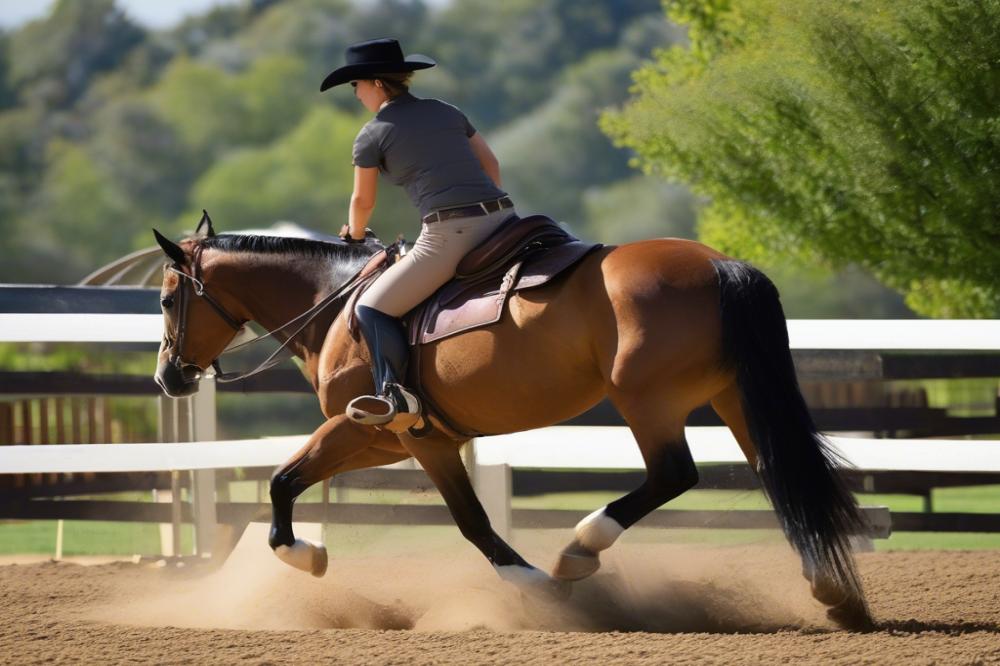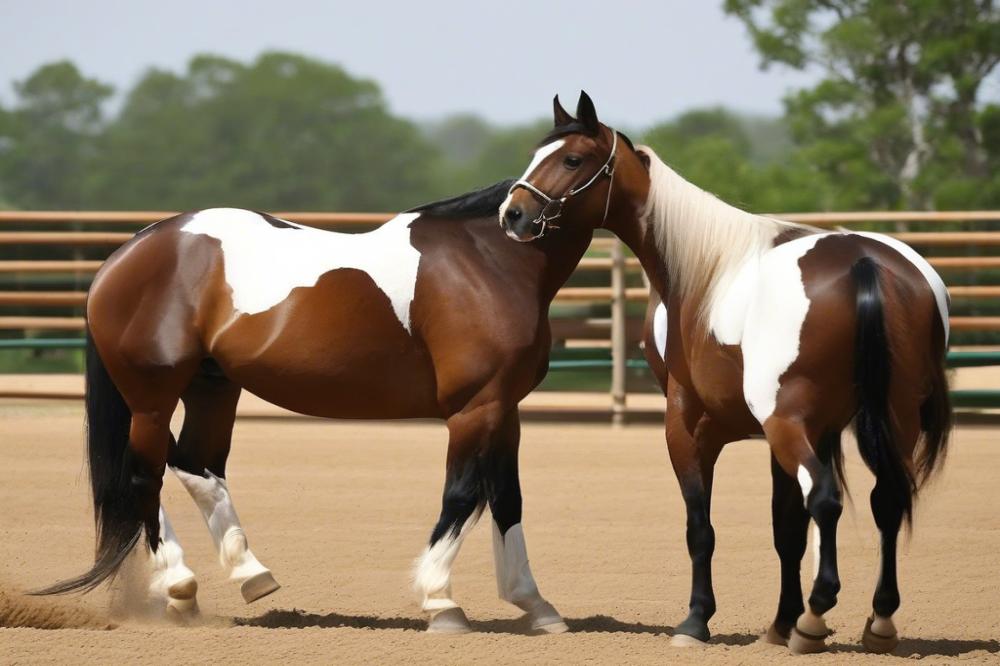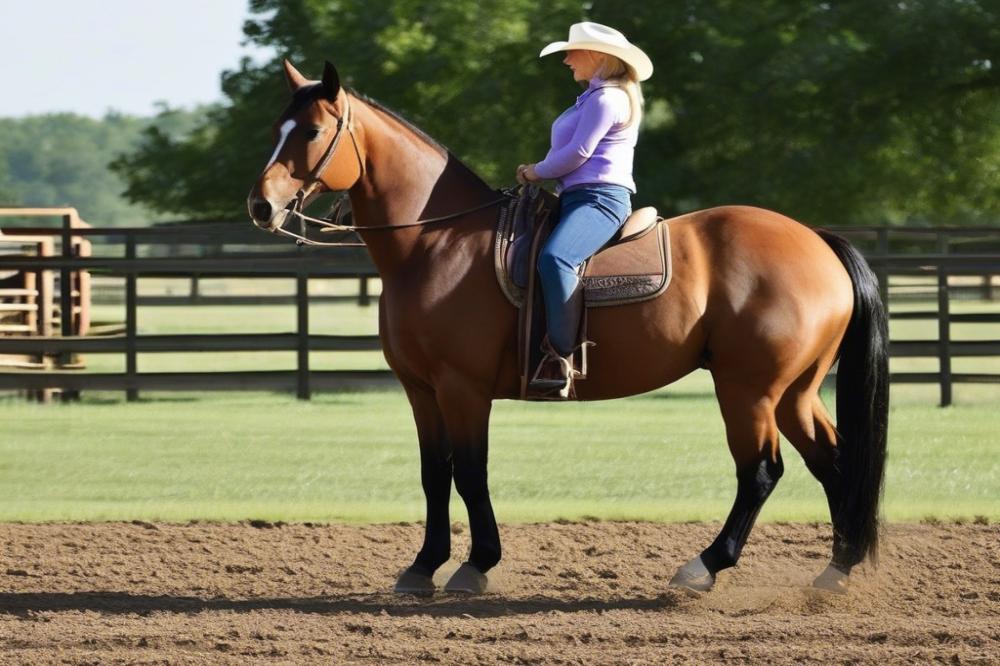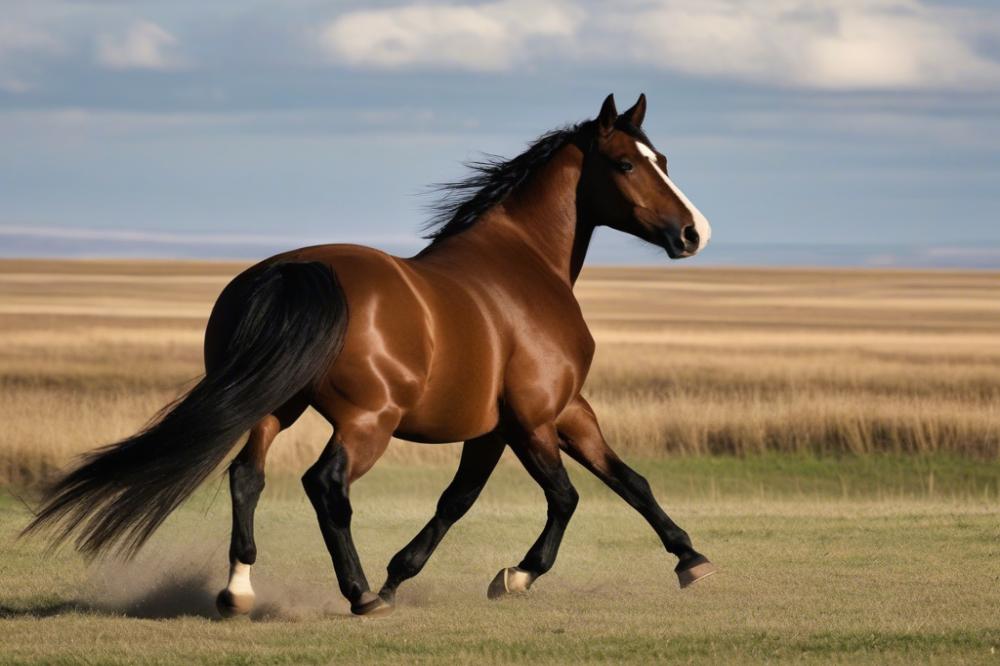Understanding the Right Age for Riding Quarter Horses
When it comes to horse riding, knowing when to start is like choosing the perfect time to plant a seed in the garden. If you plant too early, it might not grow strong enough. Likewise, riding a Quarter Horse too young can lead to challenges in both the horse’s development and your enjoyment of the ride. So, let’s dive into the fascinating world of when these majestic animals are ready to take a rider.
Quarter Horses are often considered the athletes of the equine world. Known for their strength and agility, they excel in various equestrian disciplines, from barrel racing to ranch work. With a history that traces back to ancient Rome horses, these breeds have been prized for their incredible speed over short distances and their docile nature. Their impressive characteristics make them a top choice for both beginners and experienced riders alike.
This article aims to provide valuable insights and tips for horse training, focusing specifically on when and how you can start riding your Quarter Horse. Understanding Quarter Horse development is crucial to ensure your horse is both mentally and physically ready. We’ll explore some helpful equestrian tips that will make your riding experience smoother and more enjoyable. By the end, you’ll be well-equipped to make informed decisions about your horse care and riding journey.
With that said, let’s saddle up and gallop into the details of when your quirky, four-legged friend is ready to hit the trail!
Understanding Quarter Horse Development

When we think about horse riding, it’s easy to image galloping across a field. However, before that beautiful moment can happen, there’s a lot going on in a Quarter Horse’s life. Horses go through several growth stages, kind of like how kids grow up. They start as tiny foals and slowly grow into strong adults. This journey affects how they can handle horseshoes, saddles, and riders later on.
Growth Stages of Horses
A foal is born and is quite curious. They stand up and walk within a few hours, which is pretty amazing! As they get older, they become yearlings, exploring everything around them. At this stage, they might still be a little gangly. But by the time they’re two, they start to have a better sense of themselves and their surroundings. Getting the hang of things is crucial as they prepare for horse training.
Physical and Mental Maturity in Quarter Horses
It’s important to know that maturity isn’t just about size. Mental growth is just as significant. A Quarter Horse won’t be ready for riding until they can focus and respond well to their rider. Between the ages of two and four, they gain strength and experience. Riding isn’t just about physical readiness. It’s also about mental maturity. Training sessions work best when the horse is calm and attentive. A distracted horse can be unsafe and frustrating for everyone involved.
Factors Influencing Development
Many factors influence how quickly a horse grows up. Genetics can play a big role, just like in people. Some horses naturally mature earlier than others. Nutrition matters too! A balanced diet helps a horse develop strong muscles and bones. Good horse care ensures a horse will be in top shape. Training methods also make a difference. Gentle training techniques promote confidence, making learning smoother.
Finally, the environment matters. Horses that spend time with other horses learn from them. Watching and playing helps them understand social skills, which is just as important in horse riding. While Quarter Horse riding age is often set around the age of two, the real secret lies in observing the individual horse.
Recommended Riding Age for Quarter Horses

When it comes to riding, starting at the right age can make all the difference. Most experts agree that Quarter Horses are ready to start their journey under saddle around the age of two. By then, they have developed enough physically and mentally to begin their equine training journey. Think of it like teaching a child to ride a bike — it takes patience and time.
The age range commonly accepted for training typically stretches from two to four years. At two years old, a horse is generally not fully grown but can usually handle light work. Training during this period should focus on groundwork and basic skills, laying a solid foundation for more advanced horse riding later on.
However, some horses are ready earlier, while others might need a little more time. Each horse has its own personality and growth rate. Some might act like they’ve got things figured out at two, while others might still be a bit wobbly. This can be influenced by their genetics, health, and even their environment. When considering horse care, keeping these traits in mind can really help in deciding when to commence the riding phase.
Training methods also matter. Gentle and positive reinforcement works wonders! Getting to know your horse during the early stages is important. Observing how they react can provide valuable insights into when to introduce riding. There’s nothing that beats that “Aha!” moment when a young horse figures something out. It’s almost like watching a lightbulb switch on, highlighting the joy in both horse and rider.
Equestrian tips often stress the importance of patience. Just because a horse is supposed to be at a certain age to start riding doesn’t mean they should rush it. Slow and steady wins the race, as the saying goes! Whether you’re using traditional methods or something a bit more innovative, your horse’s unique journey is what counts.
Signs Your Quarter Horse is Ready for Riding

Behavioral Indicators of Readiness
Identifying whether your Quarter Horse is ready for riding can be a bit of a puzzle. Noticing how they behave around you and other horses is key. A curious horse that approaches you with interest might be showing signs of readiness. When they stand calmly and show good manners, it’s a positive indicator. If your horse is easily distracted or jumps at every little noise, they may need more time. Some horses even ‘call’ to you when they see the saddle, eager for their training sessions. This enthusiasm can mean they’re ready to advance in their horse training journey.
Physical Signs of Maturity
Observing a horse’s physical development is crucial too. Around two years of age, Quarter Horses typically begin to show changes that indicate maturity. Look for signs like a well-defined wither and back structure. These traits suggest they are growing stronger and can handle the weight of a rider safely. If you notice a developed chest and rounded hindquarters, that might mean your horse is on the right track. Muscle tone can also indicate readiness. However, even a strong-looking horse might not be mentally prepared, so it’s a combined effort.
Importance of a Veterinary Assessment
Before jumping into the saddle, consulting a veterinarian provides peace of mind. A vet can determine if your horse’s body is ready for the rigors of riding. They’ll check joint and hoof health, ensuring everything is in tip-top shape for equine training. Regular check-ups are vital too; a healthy horse is always a safer companion. Listening to a professional’s advice is part of good horse care. Remember, investing time in your horse’s health can lead to smoother horse riding experiences later on.
Training Considerations for Young Quarter Horses
Starting Training at the Appropriate Age
Starting equine training too early can lead to problems later on. Quarter Horses need to be physically and mentally ready before you hop on. Most trainers suggest waiting until they are at least two years old. At this age, young horses can handle the basics without being overwhelmed. Rushing this process often leads to fear and confusion for them. Horses respond best when they are taught slowly and patiently. It’s about laying a solid foundation for future learning.
Types of Training Suitable for Young Horses
Focus on groundwork to build trust and understanding with your young Quarter Horse. Groundwork is a crucial part of horse care that establishes communication. You can teach them how to lead, stop, and back up without the pressure of riding. This is important for their overall development. Once they have solid ground skills, you can start introducing them to saddling and bridle work. Think of it like teaching a toddler how to take their first steps before giving them a bicycle. Progress at a pace that keeps your horse engaged but not stressed.
Importance of Professional Training Assistance
Training a young horse can feel overwhelming sometimes. Many owners find that hiring a professional trainer helps ease the process. A trainer has the skills to provide quality horse training that you might not have yet. These experts know how to read a horse’s body language. They can adapt their techniques to fit each horse’s personality. Trust me, learning from someone experienced can save you headaches in the long run. Plus, it allows you to better support your horse while they grow and learn. Equestrian tips from professionals can be invaluable, especially for first-time horse owners.
Potential Risks of Early Riding
Risks of Riding Too Early
Starting to ride too soon can be a slippery slope. Young horses, including Quarter Horses, need time to grow. Riding them before they are ready can lead to physical problems. Joint injuries are common. These injuries might not show up right away, but they could haunt the horse later in life. Muscles that aren’t fully developed are at risk when under strain.
Mental health is also important. A horse may become nervous or fearful if ridden too early. This can affect their ability to learn during equine training. They might associate riding with stress instead of fun. That could lead to behavior issues down the road.
Long-term Consequences of Early Training
If a horse starts training before it’s fully mature, the effects can be long-lasting. Issues such as stiffness could harm performance in competitive events or riding for pleasure. A horse might struggle with certain movements if they were pushed too hard at a young age. This creates a cycle of frustration for both the horse and rider.
Many seasoned riders agree that patience is key. Early training shortcuts may seem appealing but could lead to a slower overall progress. Keeping the long game in mind is a wise strategy for anyone serious about horse riding.
How to Avoid Injuries During Initial Rides
Before you hop on, always consider your training approach. Starting with groundwork can build a strong foundation. Groundwork helps a horse understand what you expect. It also prepares their body for riding.
Investing in quality horse care plays a vital role too. Regular check-ups help ensure your horse is healthy. Using the right tack is essential. A poorly fitting saddle can cause discomfort and lead to injuries. As a rider, pay attention to your horse’s body language. If they’re showing signs of distress or discomfort, it’s a red flag.
Proper warm-up routines are critical as well. Stretching those muscles a bit before a ride can prevent injuries. All riders should remember: it’s not just about getting in the saddle. It’s about building trust and understanding. Happy riding begins with informed choices!
Alternative Activities Before Riding
Groundwork and Lunging Exercises
Groundwork is like hitting the gym before stepping into the boxing ring. Horses, especially young Quarter Horses, benefit immensely from groundwork exercises. These activities focus on building essential skills without the added weight of a rider. Lunging is a great way to teach your horse basic commands and improve their responsiveness. It’s almost like a dance, where you guide your equine partner in circles, teaching them to move with grace.
While lunging, you can reinforce cues, such as whoa and go. These signals become part of a horse’s vocabulary, essential for smooth riding later on. Try to keep each session engaging. Mix it up. Use different patterns or obstacles to keep their focus sharp. This variety keeps both you and the horse interested and grows that important bond.
Building Trust and Connection
Creating a solid relationship with your horse can take time but pays off greatly. Trust shines through during groundwork. It’s your opportunity to show your Quarter Horse that you mean no harm. Talking softly and spending quiet moments together can really help secure that bond. Horses are like big dogs, and they can sense your feelings. If you’re calm, they’ll feel calm too.
Spend time grooming your horse, scratching their favorite spots. You’d be surprised how much this can bolster trust. Each gentle pat is like a stamp of approval that tells them you’re a friend. Eventually, you’ll notice your horse is more willing to engage during training. A solid rapport will lay the groundwork for successful horse riding adventures that follow.
Benefits of Groundwork for Young Quarter Horses
Groundwork has many benefits, especially for Quarter Horse development. First off, it helps with physical fitness. It ensures your horse builds muscle without the added pressure of carrying a rider. This is crucial for young horses, who are still growing and developing their bodies.
Training sessions on the ground can also prevent bad habits. Teaching your horse to respond before jumping in the saddle helps establish clear communication. Imagine trying to have a conversation when someone is constantly on their phone – it just doesn’t work! The clearer the connection you create, the easier it is to transition to riding when the time comes.
Moreover, groundwork fosters mental stimulation as well. It can challenge a young horse’s mind, encouraging them to think through problems. These exercises can help your Quarter Horse become more confident. Remember, there’s a whole world out there besides the saddle! You’re setting them up for success. Better groundwork leads to a better riding experience, and in the end, that’s what every equestrian dreams of.
Final Thoughts on Riding Your Quarter Horse
When discussing the right age for riding a Quarter Horse, it’s clear that most horse enthusiasts agree on a general timeframe. Typically, starting around 2 ½ to 3 years of age is seen as acceptable. Horses, much like humans, have their own timelines. Some may mature quicker while others might need a bit more time to grow into their roles. It’s important to remember that each horse is unique, and patience is key.
Responsible training cannot be overstated. A rushed approach can lead to problems later on, not just for the horse but also for the rider. Imagine a scenario where a two-year-old gets thrown into the saddle without proper groundwork. It’s like sending a toddler off to high school without any prep. Wouldn’t that just create chaos? Instead, focus on building a strong foundation. Groundwork, trust-building, and familiarizing the horse with all the sights and sounds of riding can go a long way.
Prioritizing the welfare of your horse should always come first. Riding too early for the sake of impressing friends or showing off can lead to physical and emotional issues. Just as we wouldn’t want a child to carry a burden too heavy for their little shoulders, the same idea applies to horses. They deserve the chance to learn and develop at a pace that suits them best. Ever watch a horse respond to human speech? Many people wonder, do horses understand words? While they may not comprehend everything we say, they definitely read our body language and tone like an open book.
Furthermore, being attuned to your horse’s feelings is crucial. Did you know that understanding horse ear meanings can tell you a lot about how your horse is feeling? Ears forward indicates curiosity, while pinned back might suggest annoyance. Always keep an eye on those expressive ears—they can give you insights that help build a connection.
So, as you consider the right timing for riding your Quarter Horse, remember: it’s not just about the thrill of the ride. Embrace the journey with your horse, taking every step together with care and compassion. That way, when the time comes to mount up, both you and your beloved animal will be ready to tackle the trails ahead with confidence and joy.



